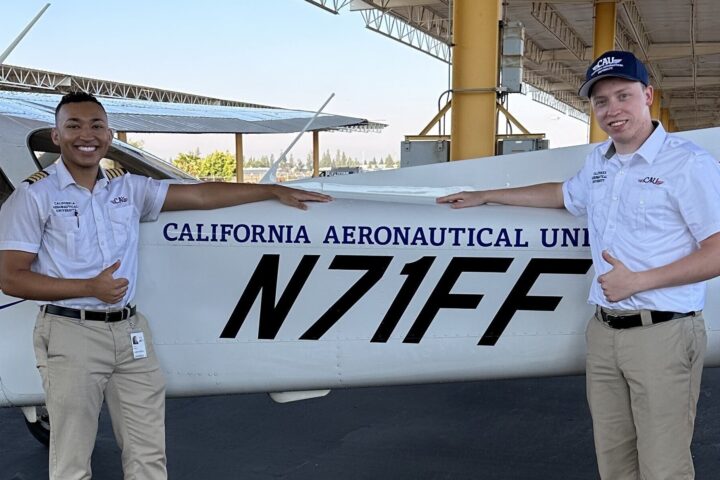When making the decision to be a pilot, you have to choose the best way to reach your goals. A quick search online and you can see that there are many flight schools all around the country offering you a future in the sky.
Each aviation program and flight school has something to offer, but it is important to look at the bigger picture and the overall value they provide. For instance, flight schools and aviation universities may be FAA Part 141 or Part 61. Do you know what they are? Do you know which one is right for you?
Come with us as we take a closer look at Part 141 and Part 61 and how they relate to your decision to become a future pilot.
Part 141 vs. Part 61: An Overview
Part 141 and Part 61 are approvals that are provided to colleges, universities, and various flight schools throughout the United States. Each classification is designed to let students know that their school’s curriculum has been reviewed by the FAA and that they have met a list of standards.
Yet, Part 141 and Part 61 are very different— and they can play a role in what you are trying to achieve with your training. This is why it is so important to have an understanding of what each one is and how it will impact your future.
Below is a very basic overview of both before we dive in deeper.
Part 141 approval is a highly structured program designed for those who are interested in obtaining certificates/ratings necessary for a career in aviation within a specific timeframe.
Part 61, on the other hand, is much less structured, offering a greater sense of flexibility for the student. This is a great option for those seeking to move at a slower pace. Many who want to learn how to fly as part of a hobby or an addition to their current career may find that Part 61 is a better fit.
Understanding Part 141 Status
The FAA awards Part 141 certification to those pilot schools that meet very specific requirements providing students with a high level of structured training. According to the rules that fall under Title 14 of the Code of Federal Regulations (14 CFR) Part 141, any school wishing to achieve this certification must prove that they offer:
-
A structured training program and syllabus outlining each course
-
Skilled, experienced, and knowledgeable instructors
-
The proper equipment and facility to successfully meet the demands of training
The FAA reviews, evaluates, and tests all areas of the training to ensure that it meets the standards required for certifications. In fact, there are 5 phases of the process that schools must go through in order to get awarded this certificate.
How Part 141 Certification Benefits Students
Students who attend schools that have undergone the FAA Part 141 certification will find that there are many advantages to doing so. A few examples include:
-
A very structured, consistent format for formal training
-
High quality instruction
-
Enables students to meet important flight milestones within a specific timeframe
Further, eligible students who attend Part 141 schools and also earn their bachelor’s degree in aeronautics can also receive reductions in flight-hour and age eligibility requirements. These additional benefits include:
-
The ability to qualify for a restricted airline transport pilot (R-ATP) certification instead of the standard airline transport pilot certificate (ATP)
-
Eligible to earn an R-ATP at 21 years of age rather than earning an ATP certificate at 23 years of age
-
Obtain R-ATP certification with only 1,000 flight hours rather than an ATP with 1,500 flight hours
Attending a Part 141 school and earning a degree can provide significant time and cost saving benefits. Getting through a well-designed program early means getting to start your career earlier, too.
Understanding Part 61 Status
The FAA has a more relaxed set of standards that must be met by those seeking a Part 61 certification. This type of flight training allows you to move through the program at your own pace.
Part 61 requires that students have more flight experience before obtaining their certificate. However, because it is more accommodating to schedules, students can have more time to complete their training.
This certification may be part of a formal training program at universities as it pertains to helicopter training, but it is most commonly found within local flight training schools.
How Part 61 Certification Benefits Students
There are benefits to undergoing training from a flight school with Part 61 certification. While geared more toward those seeking part-time training or as a hobby, students undergoing this type of program can receive:
-
Modified training programs to meet student preferences
-
Flexible training schedule allowing students to learn to fly in their free time
-
The ability to choose their own instructor, rather than sticking to specific choices
Although there are advantages to this type of flight training program, keep in mind that achieving the goal of becoming a professional pilot is often best paired with a more structured program that meets FAA standards at every turn without modifications to schedules, classes, and curriculum.
Part 141 vs. Part 61: Which is Right for You?
How do you decide whether Part 141 or Part 61 is best for you? It is important to consider your learning style and your career goals when deciding which route to take. Remember, Part 141 is more structured and career-oriented for those seeking to turn their time in the field into their profession. Part 61, on the other hand, is more flexible and convenient for those learning to fly alongside their regular routine in life.
Which one is right for you?
Decide what your goals are and what it is you hope to get from your flight training. Do you plan to use it as a profession? Is it just a hobby?
Weigh the pros and cons and decide what aligns with your future. If you aren’t sure, speaking with those who have experience can help —- such as the admissions team at California Aeronautical University.
CAU’s Part 141 Certification
At CAU, we are proud to provide highly structured, consistent aviation training as approved by the FAA. This allows us to properly equip our students for the career path in aviation that lies ahead.
If you would like to learn more or see if our classes are a good fit for your future, request more information today.
Ready to soar in your aviation career?
Mr. Matthew A. Johnston has over 23 years of experience serving various roles in education and is currently serving as the President of California Aeronautical University. He maintains memberships and is a supporting participant with several aviation promoting and advocacy associations including University Aviation Association (UAA), Regional Airline Association (RAA), AOPA, NBAA, and EAA with the Young Eagles program. He is proud of his collaboration with airlines, aviation businesses and individual aviation professionals who are working with him to develop California Aeronautical University as a leader in educating aviation professionals.










